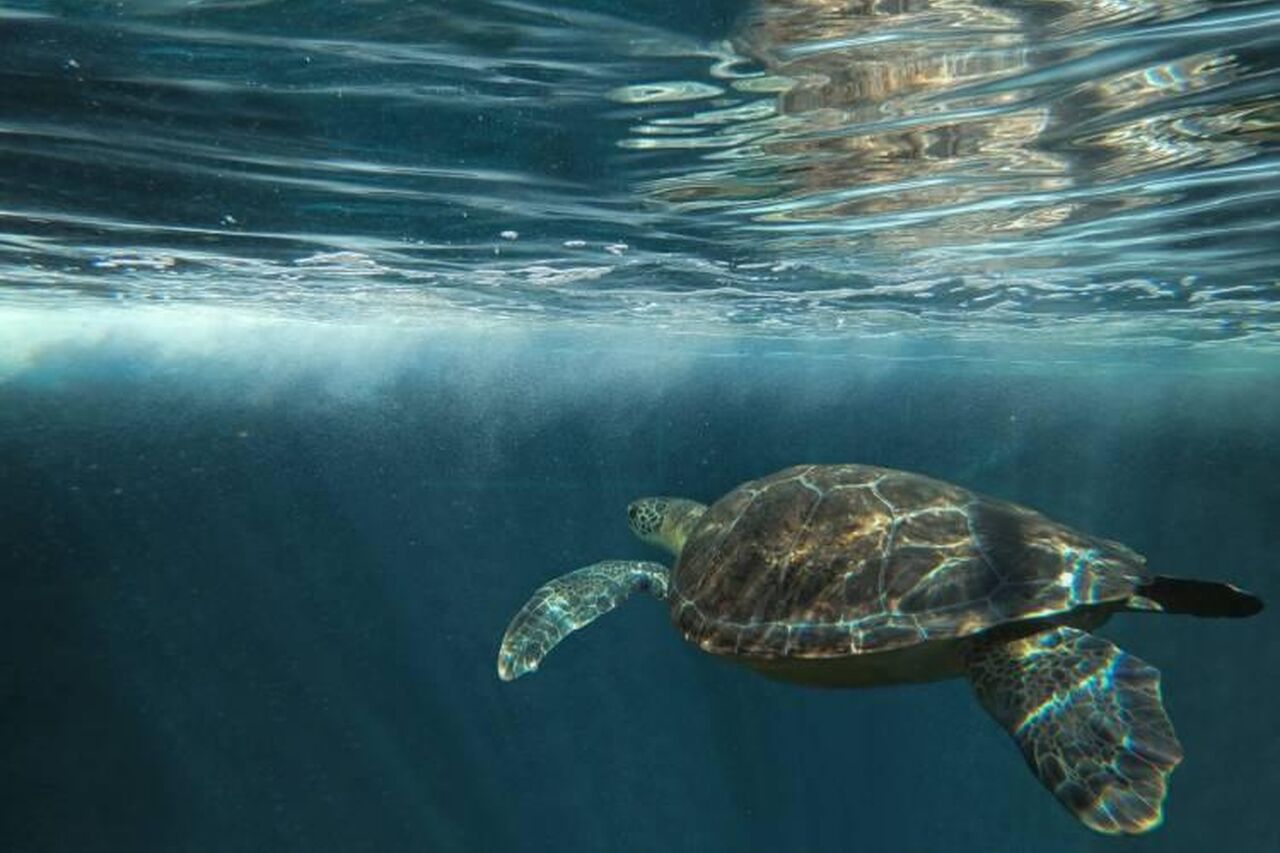Appearance and lifestyle:
The green turtle (Chelonia mydas) is so named because the fat layer underneath the carapace (shell) is green. The external colour of these turtles' ranges from a very dark brown to a light brown mottled colour. Green turtles and loggerhead turtles cannot be reliably distinguished from one another just by looking at their colour. Rather they can be distinguished from each other by looking at the general body shape (greens are rounder with a flatter lateral profile and a much smoother shell), the shape of the bill (hooked in loggerheads, but not in greens) and, most importantly, the number and arrangements of the central carapace plates and lateral plate rows (5 lateral plates next to central row in loggerheads, and 4 lateral plates in greens).

Habitat:
They reside in South African waters but occur globally. Green turtles navigate using the Earth’s magnetic field. They are also the most widely distributed turtle, nesting in 80 countries. Unfortunately, green turtles are endangered and declining in numbers. During nesting season, female green turtles lay up to 150 eggs roughly every 12 days, totalling approximately 600 eggs per season. Nesting occurs on the islands of Mozambique and other islands in the Indian Ocean. On some of these islands, green turtles have been hunted almost to extinction.
Diet:
Unlike most sea turtles, adult green turtles are solely herbivorous, feeding mainly on seaweed and seagrass. Thus, they can often be seen close inshore where abundant seagrass beds lie. Juveniles feed on small fish and molluscs.
Threats:
Green turtles are endangered and declining in numbers. On some of these islands, green turtles have been hunted almost to extinction. Some of the other threats faced by green turtles are:
- Loss of habitat
- Getting tangled in fishing gear
- Egg and turtle poaching
- Plastic pollution
- Climate change which impacts the sex ratios and nesting locations